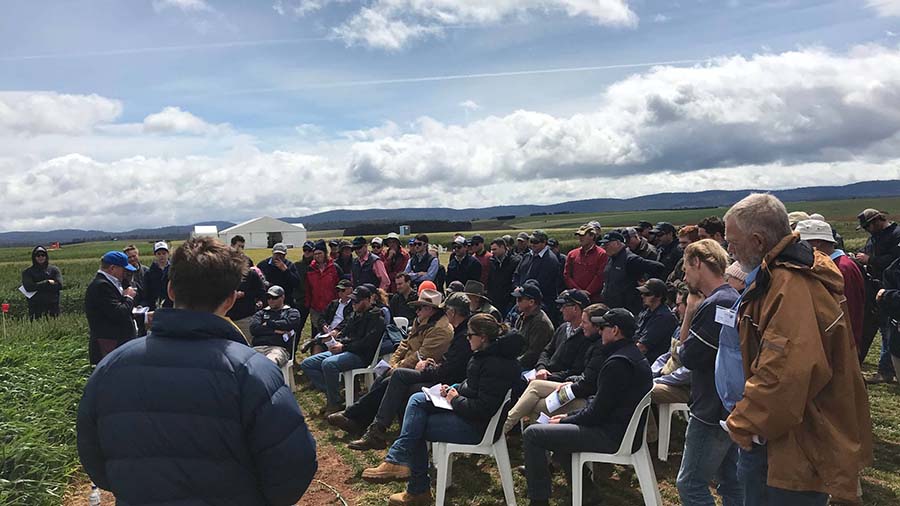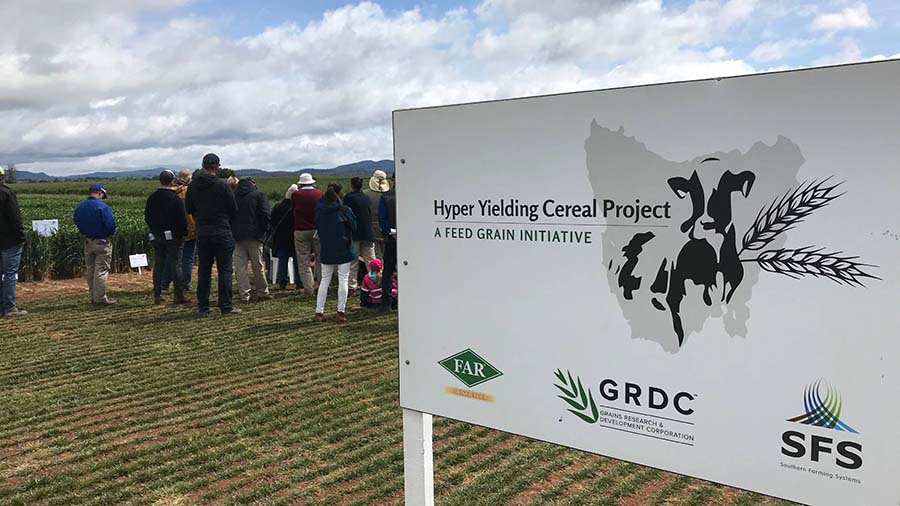Five centres of excellence and a network of focus farms will be established in high yield potential grain-growing environments across Australia as part of a major new investment by the GRDC.
The GRDC's new five-year Hyper Yielding Crops initiative will push the economically attainable yield boundaries in a range of winter grain crops.
Starting next year and concluding in 2025, this national investment will build on the success of the GRDC's Hyper Yielding Cereals Project that has been conducted in Tasmania over the past four years.
The five new centres of excellence will be an expansion from Tasmania to include key high yield potential dryland cropping areas of Victoria, South Australia, Western Australia and New South Wales.
Attached to each centre of excellence will be five focus farms (25 farms in total) and a lead grower network aimed at taking research and development learnings from small plot to paddock scale.
Project extension
GRDC Senior Regional Manager - South, Craig Ruchs, says the new investment is an evolution of the success of the Hyper Yielding Cereals Project investment, both in geographic reach and crop scope.
"The new investment will see a shift in focus from a feed grain cereal initiative to explore broader opportunities in wheat, barley and canola, as well as pulse crops, where appropriately adapted varieties warrant inclusion in the program," Mr Ruchs said when announcing the new investment during the opening of the recent Hyper Yielding Cereals Project field day at Hagley.
"The Hyper Yielding Cereals Project, now in its final year, has successfully demonstrated that enormous opportunity exists to set new attainable yield targets in higher rainfall regions and provide growers with fresh impetus to boost production and profitability.
"The current project - aimed at driving an increase in Tasmania's production of high-quality feed grain cereals and thereby reducing its reliance on supplies from the mainland - has shown that it is very possible to more than double yields in some situations through planting of the right cultivars and effective implementation of appropriately tailored management strategies."
Grower involvement

Mr Ruchs said the Hyper Yielding Cereals Project utilised a 'seeing is believing' participatory research approach, with results being achieved in growers' own paddocks and local environments.
This same approach will underpin the new national investment.
"We hope this proven approach, combined with appropriate mentoring and agronomic support, will assist growers to move from intent to change, to implementation, providing the motivation, knowledge and ability to realise yield and profit opportunities."
Through the new investment, high yield potential cultivars suited to local environments will be identified and the most appropriate agronomic management tactics - including paddock selection and preparation, canopy management, disease, weed and pest control, and crop nutrition strategies - will be explored to assist grower and adviser decision making.
"Growers will have the knowledge, ability and confidence required to advance their farming systems beyond the status quo," Mr Ruchs said.
The current Hyper Yielding Cereals Project in Tasmania is being led by FAR (Foundation for Arable Research) Australia in collaboration with Southern Farming Systems (SFS).
The project has attracted considerable interest from mainland growers, and as an extension of the Tasmanian research, the GRDC recently partnered in the South Australian Crop Technology Centre which is located near Millicent in SA's high rainfall South-East.
The research site was established to evaluate high-yielding, long-season germplasm from Australia and overseas that has the potential to drive yields in mainland high rainfall zones.

The Hyper Yielding Cereals Project research site at Hagley. Photo: GRDC
Similar to the Tasmanian initiative, the SA Crop Technology Centre project is also focused on the role of agronomy and new technologies in assisting growers to boost production and profitability.
Looking ahead
Mr Ruchs said the new national investment and its targeted outcomes were strategically aligned with one of 30 GRDC Key Investment Targets recently developed to set the direction for future investment under the GRDC's Research, Development and Extension Plan.
"Key Investment Target 1.5 aims to reduce the gap between actual and potential grain yield through more informed and timely decision making on planting time, crop/variety choice, weed management, pest and disease control, and crop nutrition," he saud.
"The Hyper Yielding Crops initiative aims to support growers in their endeavours to extract more from their farming systems by ticking all those boxes.
"It will help to address current risk and reward trade-offs to further reduce the gap between current yield benchmarks and the water-limited yield potential of the best adapted crop cultivars available to grain growers in high rainfall, long growing-season Australian cropping environments."
More details will be available shortly on the open tenders section of the GRDC website
More information: Craig Ruchs, GRDC Senior Regional Manager - South, 0477 710 813.

























































